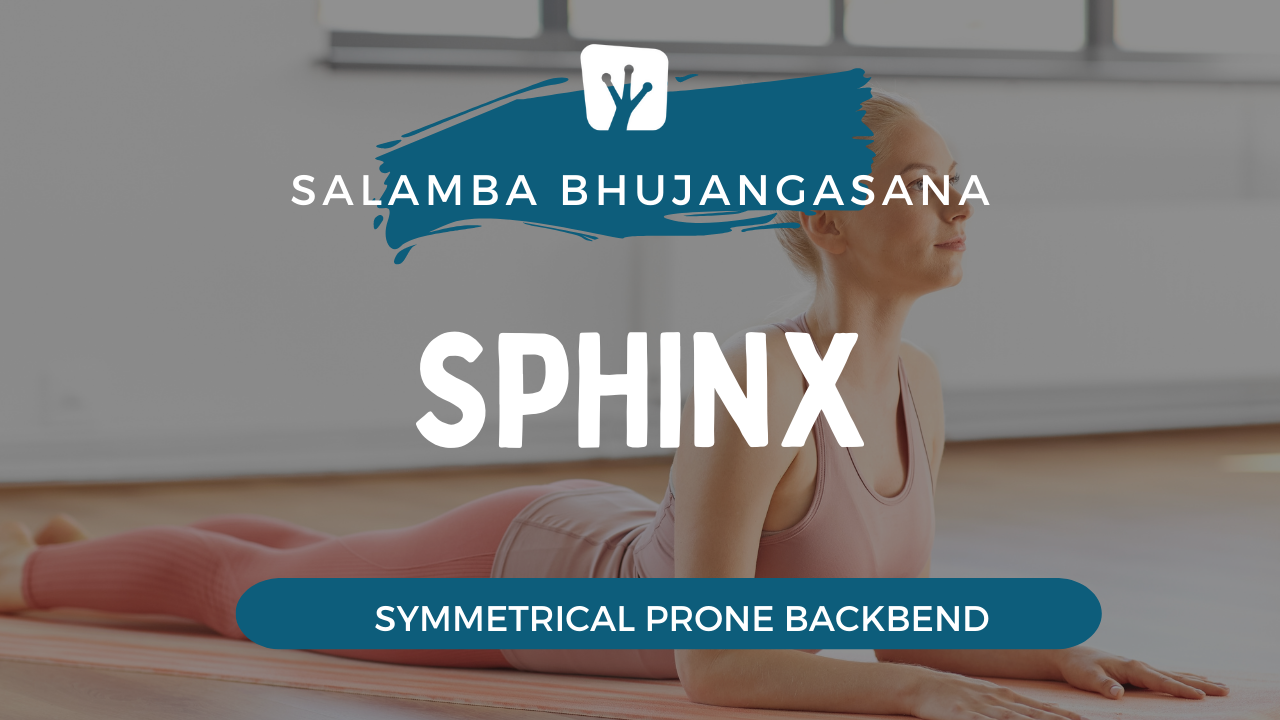Sphinx
SALAMBA - SUPPORTED
BHUJANGA - COBRA
ASANA - POSE
SALAMBA BHUJANGASANA
Sphinx belongs to the family of poses in yoga that we call backbends. It is considered to be one of the more accessible backbend poses and, like all backbends, will strengthen your spine and open up your chest. As such, it should feel quite invigorating. It is closely related to it’s sister pose - Cobra (Bhujangasana) - and it’s name translates to Supported Cobra. In Sphinx you use your forearms as a support so it is more comfortable than Cobra if you have wrist pain, injuries or conditions such as carpal tunnel or repetitive strain.
How to get in and out of the pose:
Lie on your front with your shoulders stacked over your elbows.
Start with your legs hip width apart and draw your femurs (thigh bones) inwards.
Line up your forearms with the sides of your mat.
Imagine sending your tailbone towards your heels and drawing the pelvis down towards the mat. This helps to create “space” in the lower back. Always keep the connection between the pelvis and the mat.
Inhale to lift your upper body away from the floor.
You are aiming to create an even curve along the length of the spine. Keep your neck neutral (don’t tip the head back) and look towards the top of your mat.
Draw your shoulders down and back, create width across the top of the chest.
Exit the pose by slowly lowering your upper body to the mat on an exhale and make a pillow with your arms to rest either your chin or one side of your face.
Remember to create the balance between effort and ease in your pose.
How long to stay in the pose:
Five to ten breaths normally. The yin version of this pose is held for longer.
Gaze (Drishti)
Top of the mat
Modifications you can take to make this pose more accessible:
If Sphinx feels too strong in the lower back, release your elbows forward from the shoulders.
Placing a blanket under your hips may make the pose feel more comfortable.
Contraindications / Cautions
Sphinx is one of the gentlest back bends but always be cautious with this pose if you have problems with your lower back or neck

